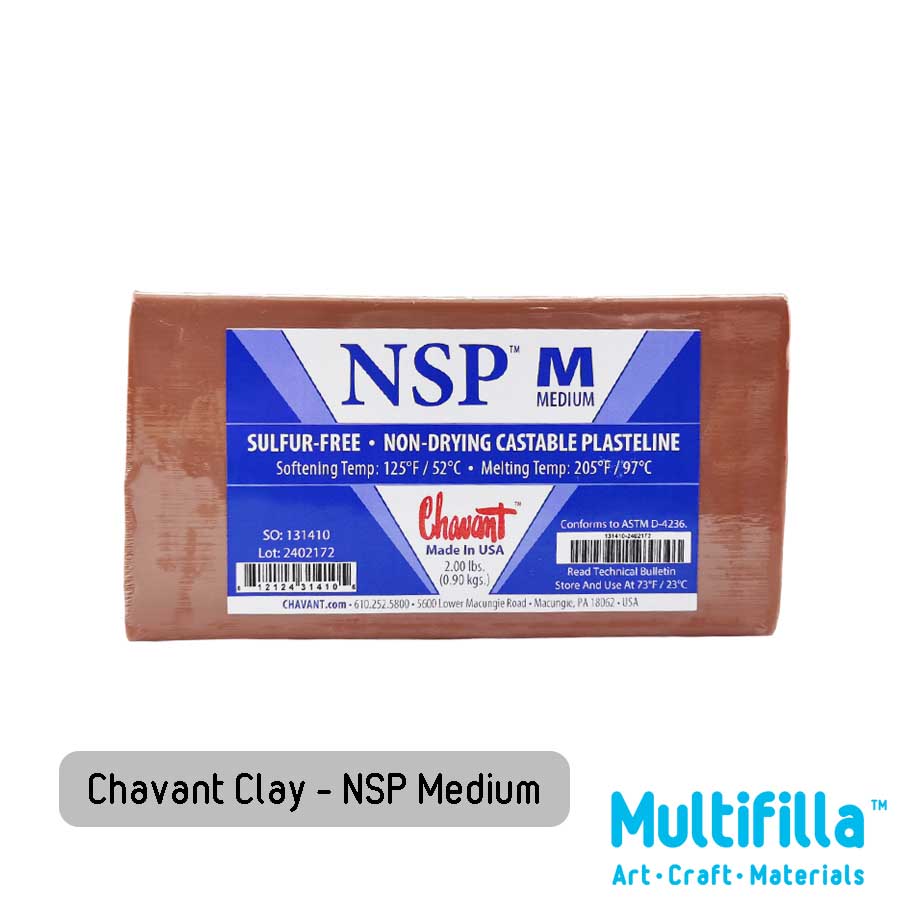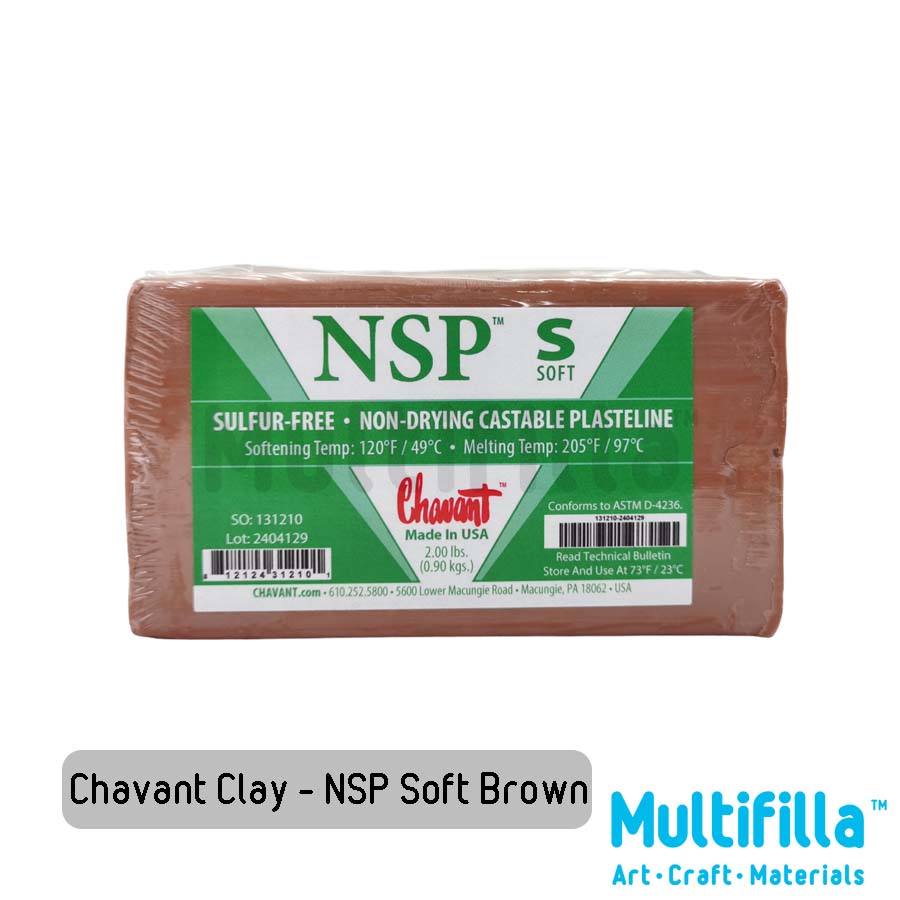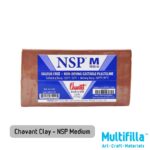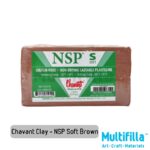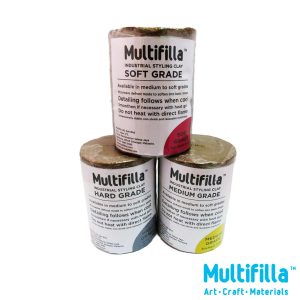NSP is a sulphur free, somewhat tougher, waxier, sculpting plasteline, used widely in fine arts and special effects. Can be melted and poured at approximately 175°F. Available in Soft Brown, Soft Tan, Medium Brown, Medium Tan and Hard Brown grades. CNC user friendly. NSP can be brushed at 170°F and poured at 175°F. When cooled, the clay tends to feel harder than the original but can be kneaded back to original firmness and consistency. Industrial styling clay is generally used in prototyping, product designing and modelling. Can be used indefinitely. Soften in microwave defrost mode or with an industrial heat gun. Clean up finger prints, blemishes with isopropyl alcohol. To mold use tin cure silicon rubber.
The NSP product line consists of clays that contain higher percentage of wax components making the clays somewhat “tuffer”. Available in Soft, Medium or Hard (terms only relevant to the NSP product line) these clays have good adhesive qualities, flexibility and length. Because they are “tuffer” NSP tends to accept cut detail lines very cleanly, with no ragged edges. The surface texture of NSP will be somewhat “grabby” when compared to sulphur-based clays and even the NSP – Soft is rather firm by some people’s standards.
NSP is commonly used by artists for the creation of sculpture and is often used to fill cracks in industrial patterns or
to build dams when making splash molds. Product designers who freehand sculpt also use NSP.
NSP is subject to surface oxidation. If the clay is in its original package it will have a long shelf life, certainly
months and probably years. If the clay is repeatedly heated and cooled, oxidation is accelerated. Sometimes this
characteristic is beneficial in handling or mold making since the surface can become harder. Clients rarely comment
on oxidation.
As a ballastic gel NSP clay represents the body beneath the body armour to be tested. The indentation created gives indication on the effectiveness of the body armour protection.
Handling tips: NSP can be warmed to soften but as it softens it also becomes sticky. Using small amounts of water, citrus-based solvents, lighter fluid, latex paint removers, turpentine or mineral spirits as a lubricant on the surface of the clay will help to attain a smooth surface.
Unique Prop’s: NSP can actually be melted and poured as a casting, brushed or sprayed. The melting point is approximately 175°F.
Softening point: NSP – Soft is generally used at room temperature. NSP – Medium and Hard are most often warmed to a temperature of 110° F – 120° F to soften it. When it returns to room temperature it also returns to the initial firmness.
Working Temp: Room temperature to 105°F.
Cautions: Due to potential oxidation, if a model is expected to sit for months at a time, it may be best to keep it out of direct sunlight and to cover it with a plastic bag to prevent direct contact with air.
Hygiene: Wash hands with soap and water after use.




